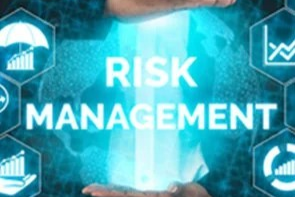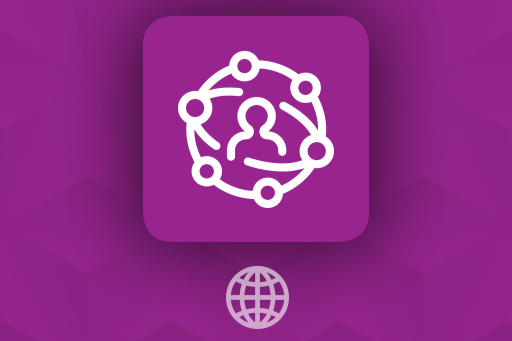Online Courses
RIMS Online Courses conveniently bridge the distance gap in era of widespread digital communication. Courses incorporate various mediums, case studies, demos, practical exercises and articles. They make education accessible and allow you to manage your learning experience with your schedule.
The online courses incorporate various elements such as audio, animations, and simulations, as well as PDFs, exercises and assessments.
The material is presented in manageable segments called modules. Unlike the traditional classroom, online learning allows for self-directed learning; in other words, you can choose to go through the course from the beginning to the end (linear) or you can take the course by completing only those modules that are of the most interests to you (non-linear). The online courses range between 10-30 hours in duration. All courses are available for six months after purchase.
Courses Offered by RIMS
Applying and Integrating ERM
Learn how to reimagine ERM programs and turn theory into practice by creating and applying a practical enterprise risk management (ERM) framework. This self-paced online course prepares you to develop and integrate a practical ERM approach that creates and protects organizational value while improving efficiencies.
Learn MoreDesigning an Enterprise Risk Management Framework
This online course will approach ERM as a strategic business plan and process to be used within an organization's existing governance and culture, while supporting its strategic and operational objectives. It will also focus on how to implement a robust and value-added ERM framework.
Learn MoreFundamentals of Insurance Overview
This online course is designed for the participant to acquire a solid understanding of property and casualty insurance as a key risk financing tool. The online course will cover insurable risks, the insurance transaction, liability concepts, standard property and casualty insurance policies, and best practice approaches in protecting an organization through insurance.
Learn MoreIntroduction to Cyber Risk and Data Security
This online course is designed for the participant to acquire an introductory understanding of Cyber Risk and Data Security. The online course will cover various facets of cyber risk and data security including privacy, security, information management, e-discovery and more.
Learn MoreManaging Cognitive Bias Risk – Recognition & Avoidance Essentials
Managing cognitive bias, especially as it relates to important business decisions, is imperative. In this online course, participants learn how to identify and incorporate debiasing techniques.
Learn MoreManaging Worker Compensation, Employer's Liability and Employment Practices in the US
Gain techniques to reduce the risk associated with workers, including statutory workers compensation, employer’s liability, and employment practices liability.
Learn MoreRIMS-CRMP Overview Course
Refresh your risk management knowledge. Prepare for the RIMS-Certified Risk Management Professional (RIMS-CRMP) certification exam at your own pace with this online course.
Learn MoreRIMS-CRMP-FED Overview Course
Refresh your federal risk management knowledge. Prepare for the RIMS-Certified Risk Management Professional for Federal Government (RIMS-CRMP-FED) certification exam at your own pace with this four-part learning series.
Learn MoreRisk Appetite Management
This senior-level online course teaches you how to navigate the complex and critical area of risk appetite management and how to develop a risk appetite framework that clarifies your company’s position on risk taking.
Learn MoreRisk Management Techniques
This online multi-platform course covers the purpose, concepts, and tools of the risk management process. Emphasis is given to supporting decision making and establishing the foundation for an enterprise risk management approach to the mitigation of traditional risks and exploitation of opportunities.
Learn MoreRisk Management Techniques for the Global Risk Professional
This online course was built for global risk professionals to not only focus on the basics of traditional risk management but also position themselves to support broader goals of enterprise risk management and strategic decision-making within their organization.
Learn MoreCourses Offered in Partnership with IIA


Assessing Cybersecurity Risks: The Three Lines Model
With the frequency and severity of cyberattacks on the rise, there is a significant need for improved cybersecurity risk management. Cybersecurity concerns have a tremendous impact on overall organizational strategy and must be considered holistically and systemically.
Learn More
Assessing Fraud Risk
As fraud risks and fraudulent activities continue to play a role in an organization’s overall financial and reputational stability, the recognition of current trends in fraudulent acts will grant internal auditors the advantage of fostering detective and preventive measures to safeguard the integrity of a business, its shareholders, products, services, and workforce.

Auditing IT Change Management

Auditing Market Risk

Auditing Model Risk Management

Auditing the Cybersecurity Program Certificate

Auditing Third-Party Risks
Using third parties invariably presents a variety of risks for organizations, including strategic, reputational, regulatory, operational, financial, transactional, security, compliance, and other risks. However, when utilized effectively, third parties can also provide tremendous value.
Auditing Third-Party Risk - IT
As organizations further their reliance on third party service providers, regulatory bodies around the world have increased their level of scrutiny regarding third party provider’s abilities to properly protect sensitive and internally used data and information assets. Today’s organizations are expected to demonstrate strong, third-party governance and risk management.
ChatGPT & Internal Audit: Governance of the Utilization of Generative AI

Ethics Essentials Bundle
The IIA’s Code of Ethics includes two essential components: The Principles and the Rules of Conduct. The principles — which internal auditors are expected to apply and uphold — are relevant to the profession and practice of internal auditing. The rules of conduct describe behavior expected of internal auditors.Learn More

Exploring Corrective Controls
In a perfect world, processes, systems, and infrastructure never fail; however, a host of natural and human actions cause disruption to critical business processes. Maintaining a solid operational resiliency program aides organizations in combating disruptions.Learn More

Governance of Enterprise IT
The governance of enterprise IT plays a critical role in the effectiveness of IT operations. Without strong governance, IT management may not have the necessary direction to achieve their stated objective. It is important for organizations to take a strategic approach to implementing IT governance.Learn More

Introduction to Critical Thinking
Critical thinking can be thought of as an art that is woven throughout the key elements of the audit process, including risk assessments, interviewing, testing and analysis, process documentation, and reporting. Effective critical thinking involves collecting and analyzing information, drawing compelling conclusions, and providing recommendations.Learn More

Managing Geopolitical Risk and Uncertainty
The definition of what we view as Geopolitical Risks has increased significantly in the past 50-100 years. Information technology interconnected global economy, our understanding of climate change, global pandemic, internal and global political shifts – all lead to an increasing set of risks impacting a business.Learn More

Liquidity Risk Management
Liquidity is a measure of the ability and ease with which assets can be converted to cash. To remain viable, a financial institution must have enough liquid assets to meet its near-term obligations. Internal audit plays a vital role in ensuring compliance with the Basel III regulatory framework, which was adopted by the Federal Reserve to ensure adequate capital in the banking system.Learn More

Logical Security: Application, Database, and Operating System Layers
A well-developed and implemented logical security management program is essential for most business processes and ensures logical data and information assets are properly protected from inappropriate access and unapproved data exfiltration. Internal auditors need a basic understanding of logical security. Learn More

IT Essentials - Introduction to IT
Technology is an integral part of every organization and underpins almost every piece of data, and every transaction, calculation, and process or business activity. Internal audit activities must be prepared to assess the increased complexities within processes that heavily rely on technology. But where does the operational internal auditor begin? Learn More

Managing People Risk with Behavioral Science
When we think of the enterprise risks, we often think of external and internal factors, competitors and vendors, policies, and processes. When we develop our risk mitigation strategies, policies, processes, and procedures, we often assume that people will support, adopt, and execute these policies – they will read, get training, and follow them. We all know better… Learn More

Physical and Environmental Controls
Physical and environmental controls provide the foundation for an effective suite of controls to protect data and information, hardware, and human resource assets. Physical security controls protect assets from inappropriate physical access, theft, or vandalism, while environmental security controls protect assets from accidental, intentional, and natural events, including fire and water damage or power disruption. Learn More

Risk, Fraud, and Illegal Acts
Learn More

Root Cause Analysis Tools and Techniques
Learn More

The Role of Internal Audit in Insurance Organizations
Learn More


